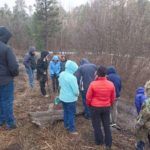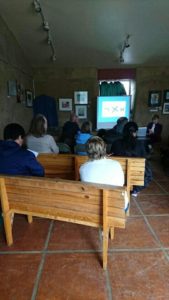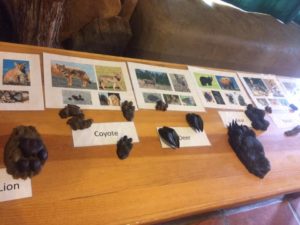This week’s adult workshop at Willow Bend focused on wildlife tracking (or sometimes, neighborhood cat tracking) .
The workshop was held as part of an annual winter partnership between Willow Bend and the Arboretum at Flagstaff. Lynne Nemeth, Arboretum at Flagstaff Executive Director, introduced us to more than 10 different clues we can use to track or identify wildlife. It’s not just tracks – but also scat, chomped vegetation, burrows, scratching posts and remains of prey. Mountain lions even leave a strong smell – much worse than your cat’s litter tray – on their ‘scent posts’.
The workshop was a big success, covering everything from skunks and bobcats to the cheeky peccaries who’ve recently moved up to Flagstaff. Participants learned that you can tell an Abert squirrel’s age by the length of their ears; that porcupine scat sometimes resembles sawdust due to eating trees; and that raccoons leave prints a lot like a human hand print. Participants also looked at tracks and real scat (in sealed boxes) of all shapes and sizes.
After the local wildlife presentation participants followed Lynne outside. Despite the mud and ongoing rain they were able to see deer and coyote tracks, ponderosa branches chewed off by squirrels and learned to tell domestic animal scat apart from their wild relatives. So now hopefully participants will know how to tell they are tracking a bobcat and not the cat next door.
The next workshop, Pruning, is coming up is March 25th! Don’t miss it.

Looking at tracks outside on the trail

Indoor presentation

Track and scat samples
